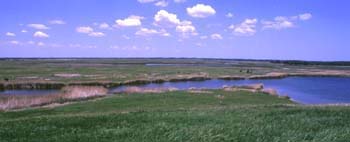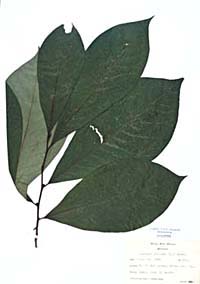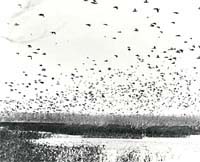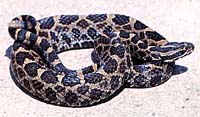Raudot's Journal, 1710
Excerpts from Antoine Denis Raudot’s letters from America in 1710
(translated from the original French)
Letter 56: Trees and Vegetables

Goose Lake Prairie
Sir,
The country that the Ilinois inhabit is unquestionably the most beautiful
which we know of from the mouth of the St. Lawrence River to that of the Mississipy.
There is little snow there, and the longest it lasts at a time is four to
five days. There is almost no cold weather there, but then the country is
at the latitude of forty degrees twenty minutes.
The land is almost all flat and smooth. There are no mountains, only a few wooded hills. It is nothing but prairies as far as the eye can see, dotted here and there with small patches of woods, with orchards, and with avenues of trees which it seems as if nature took pleasure in making grow in a straight line equally distant from one another.
These woods are full of horse chestnuts, locusts, oaks, ashes, basswoods, beeches, cottonwoods, maples, pecans, mulberries, chestnuts, and plums. All these trees almost covered with a vine that bears a handsome grape and which has large seeds, but has not an agreeable taste.
The pecan bears an olive-shaped nut twice as large as those of France. The
meat within is of a great delicateness and is found separated equally in two
by a very bitter thin shell.
The medlar [wild crabapple (Pyrus)]and the mulberry bear fruits as
good as those in France, as does the chestnut, but its nut is smaller.
The plums are as beautiful as those of France. There are several kinds, but
they have very thick skins and do not come loose from the seed, nor do they
have the agreeable taste that plums should have.

Leaves of the PawPaw
(Asimina triloba)
Herbarium Collection
Illinois State Museum
Several kinds of trees are found there which are unknown to us. There is
one that does not grow very tall whose trunk is as thick as a leg, it bears
a fruit that the savages call assemina (pawpaw). …This fruit
… is very good and has five or six seeds as large as broad beans and
of their color. There are also trees that have large pods in which are found
black stones and a kind of green ointment whose usage the savages do not know.
Another tree is found whose branches are full of thorns as long as the fingers;
it bears pods full of little beans resembling coffee beans and something sticky
that is sweet and which it is said that the English used to put in punch (*NOTE:
Honey locust (Gleditsia triacanthos).
The black poplar is also a tree of this country. It grows very tall and big
and serves these savages in making large canoes for navigating on their rivers
and lakes. …
The orchards are full of apple trees whose fruit is acrid and not larger than
is the api (small variety of French apple).
This country produces a quantity of roots and kinds of onions of which these
savages eat a great deal. There is a quantity of simples (medicinal plants)
which they know and use to heal their wounds.
Indian corn, beans, pumpkins, and watermelons grow there abundantly.
Letter 57: The Country the Ilinois Inhabit, the Trees Found There
and the Vegetables Which Are Cultivated There
At Quebec 1710
Sir,
As the country of the Ilinois is almost entirely full of fruit trees, the
plains covered with hay, the beds of the lakes and rivers and the shores full
of herbs and roots, and as the climate is very good, there is an abundance
of game and fish.
The animals are deer, roebuck, bear, lynx, beaver, otter, muskrat, wolf, buffalo, cougar, and opossum.
The buffalo is of extraordinary size. It has a hump about eight inches high extending from the shoulders to the middle of the back. Its head is covered with mane so that its eyes are scarcely visible. The animal is horrible to see. It has short hair in summer, but from the month of September until the month of June it is covered with very fine brown wool which is easily spun. Its meat is very good to eat.
The cougars are thus named (les grandes queues) by these savages because of their tails, which are about two feet long. The animal has a head like a cat, a body about three feet long, a very thin stomach, long legs, and very short reddish hair. There are no animals that they do not get hunting, and if they were as common as the wolf one would not see a deer in this country because they live principally on this animal.
The opossum is the size of our cats, its hair is white, a little reddish, long and fine like that of the marten. The savage women use it to make garters. It has a tail, as thick as the fingers, covered with a black skin like that of the muskrat. The female of this animal has two skins under the stomach, which has the same effect as a close coat buttoned above and below and open in the middle. It forms a kind of sack in which she carries, when they are young, as many as eight little ones — the number of her litter. As her slightest cry they assemble there, and she carries them with her.
There is much small game such as hare, grouse, passenger pigeon, quail, wild turkey, and a certain bird which resembles the pheasant.

Ducks over the Illinois River near Havana
The marshes are full of all kinds of river game such as Canada goose, mallards,
wood ducks, teal, white, and gray bitterns, swans, and several others that
I do not mention. This game is so abundant that when it is forced to leave
the marshes because of the dryness, which happens in certain years in the
autumn, the lake and river on which the savages are established are covered
so that a canoe could hardly pass without moving them out of the way with
the paddles.
Ducks over the Illinois River
In this lake and in this river there are better carp (*Note: probably Ictiopus
sp., Buffalo. European carp were not introduced into Illinois until 1895.)
than those of the Seine. There are all kinds of other fish in abundance.

Massasauga Rattlesnake
©Illinois State Museum
Swamp Rattlesnake
Many rattlesnakes are to be found on the prairies. This name was given them
because they have some sort of rattles at the end of their tail with which
they make a noise when they crawl. We think that this is the viper of this
continent. Its bite is very dangerous, and if one is not promptly cared for
by the savages who know the simples which cure it, one soon dies. They say
that the oil drawn from its fat is good for curing all sorts of pain and is
so penetrating that if poured on the hand it will pass through. [*NOTE: this
probably refers to the Massasauga rattlesnake (Sistrurus catenatus)]
Other Sources:
Kinietz, William Vernon. (1940). The Indians of the Western Great Lakes, 1615
– 1760. University of Michigan Press, Ann Arbor